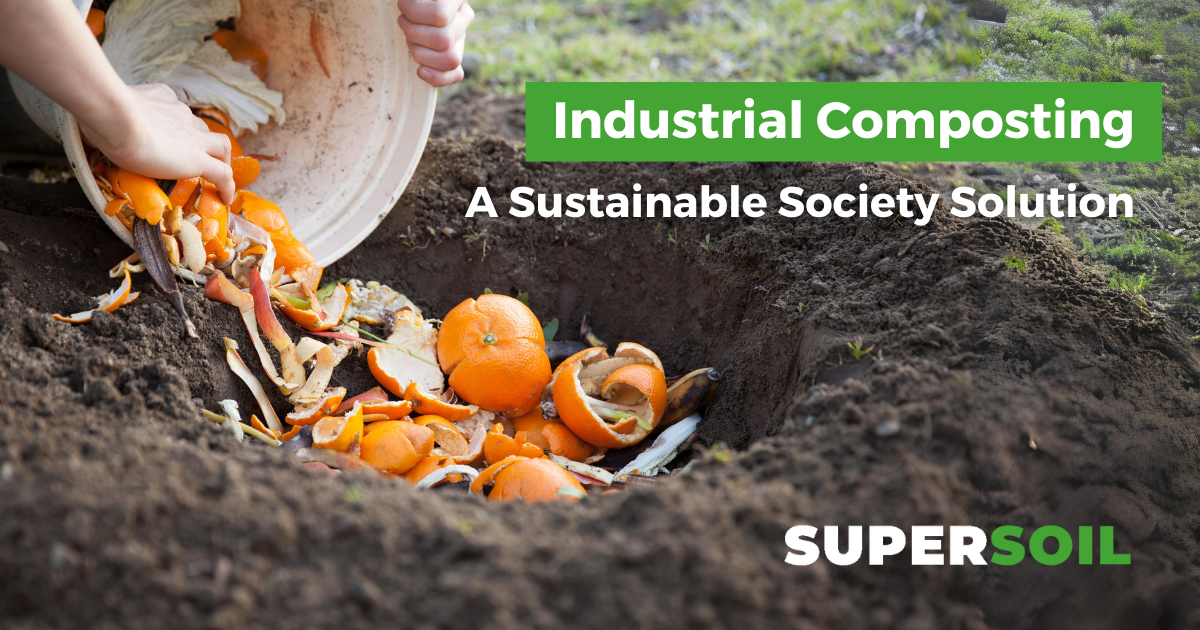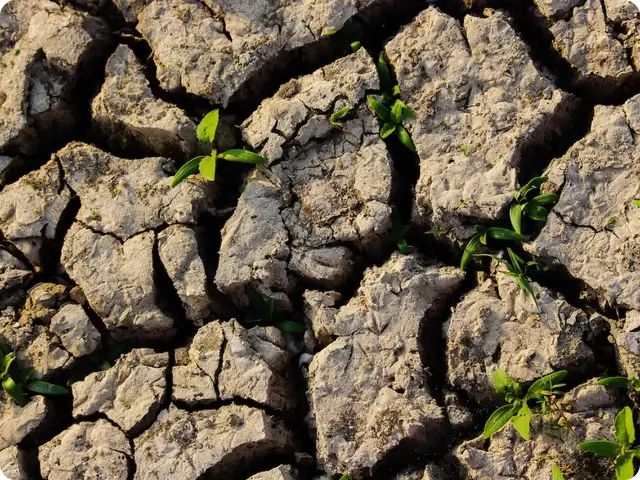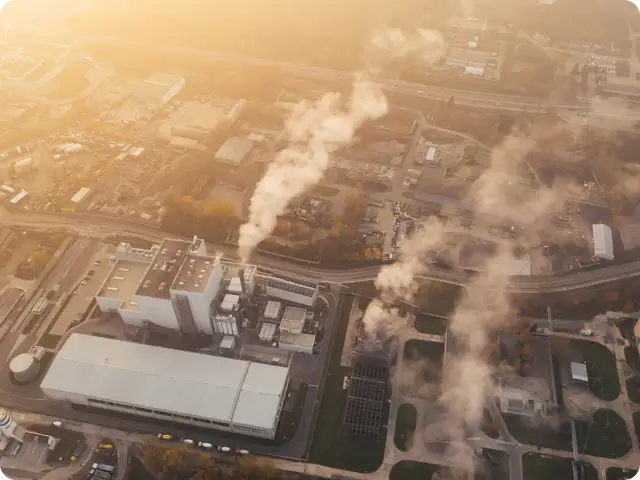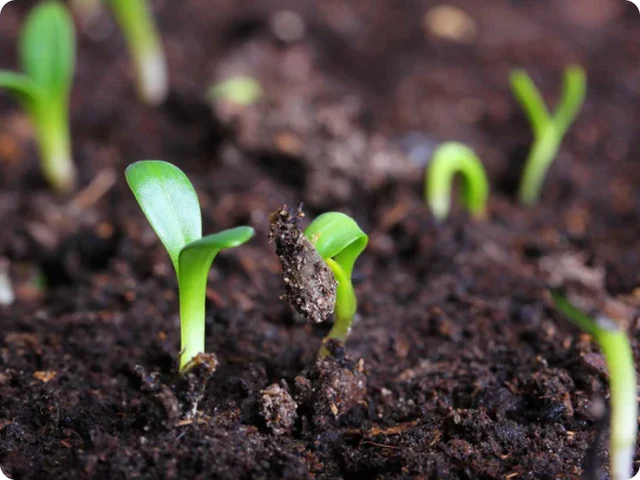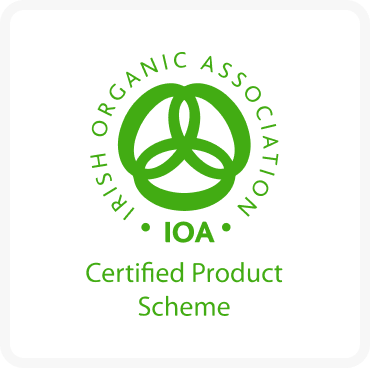Human beings produce an enormous amount of waste. Some authors call our 20th and 21st-century societies the “Society of Waste,” driven by the industrial model of infinite growth in a linear path of raw resource extraction, over-production, over-consumption, and waste. This model sees waste as an unavoidable byproduct of our inefficient social metabolism, how we organize our exchanges of energy and materials within the environment and economy, between and within our societies. However, that assumption of inefficiency is just that, an assumption we accepted and chose not to operate efficiently at any societal scale; we could be much more efficient. Another serious mistake this industrial paradigm makes is believing we are above and separate from the natural cycles of our Earth. We grow food with chemical inputs, remove the food and nutrients from the soil, and add more chemicals to grow more food. We are completely missing the whole point of how nutrient cycles work on Earth. We truly are a society of waste, and this linear path has led to environmental degradation, biodiversity loss, climate change, and a loss of ⅓ of our world’s topsoil, which all threaten global food security.
So, how do we become more sustainable? Of course, we can all stop overconsumption, reuse as much as possible, recycle whatever cannot be reused, switch to EV cars, install solar panels, etc. But there is something even bigger that we all must do—manage our waste stream better to create a more efficient circular model of social metabolism.
We are often given a false choice: Do we bury our waste in landfills or incinerate it? However, a third choice is industrial-scale composting, which can be used to save our soil. A smart, advanced civilization would understand that linear paths are unsustainable. They would understand that the food-nutrient cycle is circular, so organic ‘waste’ should be returned to the soil, nourishing it the way it did us for many millennia before conventional agriculture was invented. Not only do we solve the organic waste problem in our landfills, but we also solve the soil degradation occurring on a global scale, mitigate or even reverse climate change, and solve global food security.
Industrialised Countries and Municipal Solid Waste Generation
Waste can be broadly divided into organic waste and inorganic waste. Inorganic waste is non-biological in origin and made mostly of plastics, glass, and metals. Since it is non-biological, it does not decompose and lasts countless millennia. Our inorganic waste created the Great Pacific Garbage Patch—a floating island of plastic in the Pacific Ocean, about 1.6 million square kilometers, or about three times the size of France. Our inorganic waste is a problem created by our inefficient and wasteful society in this linear path of industrial growth.
Organic waste is biological in origin; it is living or was once living and is biodegradable. It consists of yard waste, wood waste, agricultural waste, paper products, and food waste. Currently, all that organic ‘waste’ is removed from the economy and the natural cycles when disposed of in an unsustainable linear model of landfills and incineration.
Let’s look at some data from the US Environmental Protection Agency (EPA) on the generation of municipal solid waste (MSW) in the United States in 2018. They say the total generation of MSW in 2018 in the US was 265.3 million metric tonnes (292.4 million US tons), or about 2.22 kg (4.9 lbs) of waste generated per person daily.
Of that waste generated, 21.59% was food, and another 12.11% was yard trimmings, which could easily have been composted. You can also add some of that wood waste (6.19%) and paper and cardboard (23.05%) that could also have been composted rather than landfilled, for 62.94% of organic waste. Separating our textiles, rubber, and leather into organic and synthetic would add at least a few more percentage points to that total.
Image: Total MSW Produced in the USA in 2018 - Source US EPA
The USA is not alone in its waste production. Globally, MSW is expected to reach 2.59 billion metric tonnes annually by 2030. It is either landfilled, recycled or reused, composted, or incinerated. In the European Union in 2022, 513 kg of municipal waste per capita was generated, or about 1.405 kg per day (3.09 lbs per day).
The Problem with Landfilling Organic Waste
Apart from the obvious unsustainable linear path of permanently removing organic wastes from the food-nutrient cycle, landfilling also presents other issues.
For one, landfills take up a lot of land. In the USA, there are 3,000 active landfills and 10,000 closed landfills, with each landfill being, on average, 600 acres. When we create landfills, we destroy the land so it can no longer be safely used for anything else, and virtually all biodiversity there is lost. In the US alone, millions of acres of habitat have been lost to landfills, a size larger than that of many countries worldwide. Studies in India have shown that composting can save 550 acres of valuable land from being converted into landfills every year.
Furthermore, organic waste in landfills doesn’t break down like in nature or when composting. This is because there are no healthy aerobic (with oxygen) microbe populations in landfills to perform their magic and turn that waste into compost. Instead, the organic wastes in landfills are entombed in a toxic coffin surrounded by plastics and poisons, with only the slow, anaerobic (without oxygen) bacteria that take decades to break it down and generate methane as a waste byproduct, a greenhouse gas 27 times more potent than carbon dioxide. The U.S. EPA estimates that organic waste sent to landfills produces about 18% of their annual methane gas emissions.
The Problem With Incinerating Organic Waste
Incineration is not much different from landfilling; it is an unsustainable use of our organic wastes because it also removes them from the natural food-nutrient cycle.
There has been a disturbing trend in MSW worldwide, with a significant increase in industrial incineration to recover fuels that can be used for energy and to reduce the need for more land conversion into landfills. However, food scraps still comprise the largest component of MSW and, therefore, the largest component incinerated.
The incineration statistics in the EU show that while landfilled waste has declined by 56% since 1995, the incinerated amount has increased by 98%. To be fair, composting has increased by 203% in that same period. However, a significant portion of food is still being removed from the cycle through burning, not contributing to a circular economy.
Another problem with incineration is the view that recycling doesn’t matter because it all gets burned anyway—countries that use incineration often recycle and compost less. Japan incinerates nearly 80% of its waste, yet it recycles only 19.2% and composts even less, only 0.4%.
How Much of MSW is Composted?
Globally, over one-third of our food production enters the waste stream. In the U.S., an estimated 31 to 40% of the U.S. post-harvest food supply goes to waste, most of that at the consumer level as uneaten food gets tossed in the trash. While there is a serious need to reduce our food waste to achieve the UN Sustainable Development Goal 2 - Zero Hunger by 2030, there is also a serious need to stop throwing organic MSW into landfills or incinerators where they are removed from the food-nutrient cycle.
So, let’s look again at those US EPA numbers. Of that 62.94% or 166.98 million metric tonnes of organic waste, how much was composted in 2018? The US EPA says that 22.68 million metric tonnes (25 million US tons) was composted, or about 8.5% of total MSW, with only 4.1% of all of that wasted food ending up back in the cycle. Clearly, more work needs to be done.
Globally, the figures are even worse. According to the World Bank, organic wastes make up about 44% of what we throw away globally, yet we only compost, on average, 5.5% of it. Those numbers, of course, vary significantly across the globe.
In the European Union in 1995, they composted 6.2% of generated MSW, but that doubled by 2013. However, the numbers vary considerably. That year, the countries that composted the most were Austria (31%), Netherlands (27%), Liechtenstein (23%), Switzerland (21%), Luxembourg (20%), and Italy (18%), with the remaining countries composting much less.
Economics of Waste
While the biggest value in composting is in our soil, people base the value of topsoil on what you can sell it for. However, that number is meaningless since it does not factor in the enormous long-term gains for environmental protection for the present and all future generations. The value of saving our soil, food security, and the planet is priceless. So, instead, let’s look briefly at the value better waste management through recycling and composting would bring to waste management costs.
Waste management can account for up to 20% of local budgets in some countries worldwide, not an insignificant amount. The World Bank says that each metric tonne of improperly managed MSW costs about $375 in Southeast Asia. Properly managed through composting and recycling would cost a fraction of that at only $50-$100. Other studies done in the US estimate that increasing composting by 18% by 2030 will save around $16 billion USD in MSW management costs.
All that needs to be done is divert money used to improperly manage and mitigate the damage of MSW into properly managing it. Based on that alone, we would create massive and immediate savings for everyone by diverting reusable products from our landfills. That money can then be used to create the infrastructure to manage MSW properly.
Making Industrial Scale Composting Feasible
Since we know a circular economy, including composting, is a smart choice for an advanced civilization, why are industrial-scale composting facilities still in their infancy around the globe? One factor is the need for societal changes to make the projects feasible.
Societal Solutions to Aid in Industrial Composting
To make industrial-scale composting viable globally, we must change how society views and handles waste. We must improve waste separation so that organic and inorganic wastes are no longer tossed in the same bin.
Let’s look at South Korea for a moment - among the compost nerds here at Super Soil, South Korea is considered Nirvana. In 1996, South Korea composted just 2.6% of its food waste, but that jumped to over 95% by 2022, thanks to laws they have been implementing to ban landfilling food waste. There, residents must separate their food waste and place it into bags that are then collected and composted on an industrial scale. They have compost bins on street corners next to trash and recycling bins. Their system is a good role model for better managing our organic waste. We need a 3-bin collection system at our homes and waste management sites (landfills, transfer stations), and cities need compost bins next to every trash can. If we implement those measures as they do in South Korea, we can solve our organic waste problem.
Another problem with industrial compost is its potential to contain toxic elements like metals and microplastics. Studies done in China, Brazil, and India found elevated levels of Zn, Cr, Cu, Cd, Ni, and Pb at levels too high to apply to food crops. The source of those toxic metals is always what we add. Therefore, we must address why our organic wastes are so high in toxic metals - a result of this inefficient linear industrial paradigm of waste that needs to change. In the meantime, we could create separate composts using separate feedstocks to create an agricultural grade and a general-purpose mulching grade not for food crops.
Other necessary societal changes include better attention to compost quality, marketing compost to be effectively utilized, and a distribution method to ensure it can reach all potential users. This will require space and infrastructure for composting facilities, a distribution network, local expertise and connections with the agriculture sector to use it, and political support to make it happen.
The Dangers of Microplastics in Our Compost
To create a truly circular food-nutrient economy, we must also distance ourselves from this greenwashing by companies promoting plastics as “biodegradable” or “compostable.” Companies throw those words out meaninglessly since nothing legally prevents them from using them.
Often, so-called biodegradable plastics cannot completely degrade under natural conditions and instead, break down into microplastics faster than conventional plastic. This means that those biodegradable ‘composting bags’ you may be tossing your compost in could be a dangerous form of greenwashing that adds to the problem rather than being part of the solution. This further threatens our soils, crops, livestock, and ourselves when we consume plants and animals filled with microplastic pollution from our soils. Terrestrial soils already contain 4-23% more microplastics than our marine environments, yet few appear concerned about this. The solution is to stop using plastic altogether.
While we wait for our societies to phase out single-use plastics, some facilities have overcome the plastic problem by using aspirator systems that select materials based on density, allowing the plastics to be removed mechanically. Of course, removing them at the source is the best method, but at least a workaround exists for now.
Making Industrial Composting Work
So, how do we make industrial composting feasible? It is not that complicated. Any compost nerd already knows that to develop quality compost, all you need is organic materials in approximately the right C/N ratio (30:1 is ideal), air, and moisture. Dealing with the carbon (C) to nitrogen (N) ratio is much less complicated than it seems; all you need to do is mix high-carbon materials (dry, brown materials like dead leaves, paper, cardboard, wood chips, etc.) with high-nitrogen materials (wet or green materials, grass clippings, kitchen scraps, animal byproducts). Then, don’t let the pile dry out and stir it occasionally to aerate it and promote aerobic decomposition. Easy peasy.
Moving to an industrial scale is not that different; you just make bigger piles and use bigger tools. However, to make quality compost on an industrial scale, it's important to monitor its development, recording temperature, aeration, porosity, moisture, and pH, which will affect the process and the outcome.
Many industrial composting facility designs work, and the method used depends on the local space, infrastructure, costs, and climate. Facilities in urban areas will be more challenged by space than those in more rural areas and will need to produce compost faster. Those in cold climates will have seasonality where a closed facility could be used to maintain heat in the winter months. Another consideration in facility design is using a gentle slope so that the water runs off where it can be channeled into a pond and used to water piles that get too dry.
Eliminating Foul Odors
There have been complaints about industrial facilities smelling bad—a sure sign they have gone anaerobic (without oxygen). Healthy compost should be aerobic—full of oxygen and microbes that use oxygen to break down the organic matter; aerobic decomposition creates little to no smell. If the facility smells bad, there is insufficient oxygen and it’s teeming with anaerobic microbes. This slows decomposition rates, creates unpleasant odors, reduces the facility’s capacity, and threatens the operation's financial viability.
The solution is to aerate the pile through mechanical stirring or using pipes to force air in through the middle of the pile. Turning the piles improves the finished product's homogeneity and makes a better compost than forced air systems, but it requires more mechanical effort. So again, it depends on where the facility is, how much space they have available, and how much time and energy they have to run the equipment.
The second part of that solution is adding healthy microbes like those used in Super Soil’s unique technology, which creates a population explosion of aerobic microbes to rapidly speed up the decomposition. Not only does rapid decomposition reduce those foul odors, but it also increases the facility’s capacity and, therefore, profitability compared to not using microbes and aeration. The end product, the compost, is also superior and can be sold to farmers to grow food.
Another factor is water. But more water is not necessarily better. The moisture content of compost is considered ideal between 40-65%. Studies have shown that increasing pile aeration and decreasing the watering frequency in the middle and end of the process further lowered methane emissions, reducing greenhouse gases and foul odors. However, arid and semi-arid climates with 10% or less humidity have very high evaporation rates, especially when we add the necessary aeration. If the compost is not frequently watered, the piles may dry, and the microbes may die or be forced into dormancy. This means that watering frequency depends entirely on the climate since those with humidity levels already above 65% may require little to none, while arid climates may need to add water every few days.
Feed The Soil - Feed the Planet
Composting our biodegradable MSW makes sense because it solves global food security and protects the environment. Since almost all of our organic waste originally comes from the soil (from food production, forestry, bamboo, and other crops used in paper and textiles production), a smart civilization would put that ‘waste’ back into the soil to nurture the growth of the next generation. Organic waste pollution then becomes a future solution - our society is just ignorant of its value.
Image: Creating a Circular Economy With Organic Waste and Agriculture. Source: Carter et al. Wikimedia
One Organism’s Trash is Another Organism’s Treasure
Nature doesn’t waste anything. Everything is recycled and reused by something else. All those organic products we produce only become waste when we dump them in landfills. Nature really does know best, so we should learn from nature’s example to create a sustainable circular food-nutrient economy.
By definition, soil is made of minerals, organisms, organic matter, and humus. Soil is where death becomes life because it contains living organisms, and when they die, those dead microbes and decaying organic matter feed the next generations of life. Or, at least, that is what it was until conventional agriculture was born. Conventionally farmed ‘soil’ is simply minerals since it lacks both life and death, making it prone to erosion since the dead microbes are the glue that holds soils together.
Our planet has already lost ⅓ of its topsoil due to conventional agricultural practices that remove organic matter (food) from the soils, replenish none, and rely solely on chemical inputs to ‘nourish’ the plants. Those chemicals also kill the soil biome - all the organisms that grow, live, and die in our soil, releasing nutrients to create new life. Conventional farms without compost result in degenerated soils prone to erosion, salinization, and desertification and have become a massive carbon source, exacerbating climate change.
Instead, when we compost, we turn our organic waste—the bodies of once-living organisms—into natural fertilizers that feed the soil, its microbes, and plants and, therefore, us in a self-perpetuating, sustainable, circular food-nutrient cycle. Also, soil that again becomes filled with organic matter does not erode away. We can prevent and reverse soil erosion, returning all that lost topsoil and helping solve global food security. This would simultaneously help mitigate climate change by increasing the organic carbon pool in our soils and turning them back into the carbon sink they used to be before conventional agriculture turned them into a source.
Composting Creates Profitable Economies
The potential for agronomic, horticultural, and forestry applications of industrial composting is enormous. When done correctly, it can be marketed as a fertilizer and soil amendment, supplying significant nitrogen and phosphorous otherwise limited in our ecosystems, benefiting agriculture and agroforestry immenslely. Conventional agriculture relies entirely on energy-intensive greenhouse-gas-producing synthetic nitrogen and mineral phosphorus to grow plants in a linear waste cycle. Those destructive inputs become unnecessary in soil filled with compost and microbes that feed our plants instead. This also results in soil remediation, reversing soil erosion, and improving water retention capacity. It makes farming more profitable for farmers than chemical and fossil fuel companies. It can also be used in the remediation of any degraded environment, including reclaiming salt-damaged and desertified soils so they can be used for agriculture again.
Another benefit of industrial composting is creating truly environmentally friendly compost commercially. Studies in the UK showed that commercially manufactured compost sold to gardeners in 2020 contained 35.5% unsustainable peat from our world’s bogs. Peat mining is incredibly destructive since peat only develops at 1 mm per year, and we destroy meters worth in just a second. It is also a major carbon sink we are turning into a source, worsening climate change. The UN Environment Program says that our peatlands store twice as much carbon as all the world's forests combined. Peat should not be used to fill bags of compost for sale; compost should be used to fill bags of compost.
Final Thoughts
Human beings are amazing creatures. Look at the earth from space at night, and you will see all the lights, showing what human ingenuity has created in just about 150 years. But look at that same view of the earth during the day and see the brown, barren lands as our deserts keep expanding, vegetation cover is lost due to poor pasture and agricultural practices, and our forests are cleared. If we compost on an industrial scale, we can easily reverse the staggering land losses in our semi-arid and arid regions. We can turn our planet back into the green oasis it used to be simply by transforming organic waste into compost in a circular food-nutrient cycle the way nature intended.
References
Aich, Asit; Kumar Ghosh, Organic fraction of municipal solid waste – a valuable source of green energy in India Sadhan International journal of energy sector management, 06 Nov 2016, Vol. 10, Issue 4, pages 526 - 545. https://www.emerald.com/insight/content/doi/10.1108/IJESM-06-2015-0001/full/html
Cao, X., Williams, P. N., Zhan, Y., Coughlin, S. A., McGrath, J. W., Chin, J. P., & Xu, Y. (2023). Municipal solid waste compost: Global trends and biogeochemical cycling. Soil & Environmental Health, 1(4), 100038. https://doi.org/10.1016/j.seh.2023.100038
Carter, Laura J, Sarah Dennis, Katie Allen, Patrick McKenna, Xiaohui Chen, Tim J. Daniell, Barbara Evans, Jeremy S. Guest, Hongyan Guo, Stuart Kirk, Yong-Guan Zhu, Asif Reza Anik, Naqshe Zuhra, and Steven A. Banwart - https://doi.org/10.1021/acsestwater.3c00803, CC BY 4.0, https://commons.wikimedia.org/w/index.php?curid=145888666
Farhidi, F., Madani, K., & Crichton, R. (2022). How the US Economy and Environment can Both Benefit From Composting
Management. Environmental Health Insights, 16. https://doi.org/10.1177/11786302221128454
Fan, P., Yu, H., Xi, B., & Tan, W. (2022). A review on the occurrence and influence of biodegradable microplastics in soil ecosystems: Are biodegradable plastics substitute or threat?. Environment international, 163, 107244. https://doi.org/10.1016/j.envint.2022.107244
Lee, E., Shurson, G., Oh, S., & Jang, J. (2024). The Management of Food Waste Recycling for a Sustainable Future: A Case Study on South Korea. Sustainability, 16(2), 854. https://doi.org/10.3390/su16020854
Marín-Beltrán, I., Demaria, F., Ofelio, C., Serra, L. M., Turiel, A., Ripple, W. J., Mukul, S. A., & Costa, M. C. (2022). Scientists' warning against the society of waste. Science of The Total Environment, 811, 151359. https://doi.org/10.1016/j.scitotenv.2021.151359
Menyuka, N. N., Sibanda, M., & Bob, U. (2020). Perceptions of the Challenges and Opportunities of Utilising Organic Waste through Urban Agriculture in the Durban South Basin. International Journal of Environmental Research and Public Health, 17(4). https://doi.org/10.3390/ijerph17041158
Neff RA, Spiker ML, Truant PL. Wasted Food: U.S. Consumers' Reported Awareness, Attitudes, and Behaviors. PLoS One. 2015 Jun 10;10(6):e0127881. doi: 10.1371/journal.pone.0127881. PMID: 26062025; PMCID: PMC4465675.
Pérez, T., Vergara, S.E. & Silver, W.L. Assessing the climate change mitigation potential from food waste composting. Sci Rep 13, 7608 (2023). https://doi.org/10.1038/s41598-023-34174-z
Roy, E. D., Esham, M., Jayathilake, N., Otoo, M., Koliba, C., Wijethunga, I. B., & J., M. (2021). Compost Quality and Markets Are Pivotal for Sustainability in Circular Food-Nutrient Systems: A Case Study of Sri Lanka. Frontiers in Sustainable Food Systems, 5, 748391. https://doi.org/10.3389/fsufs.2021.748391
United States Environmental Protection Agency. (2022, December 3). National Overview: Facts and Figures on Materials, Wastes and Recycling | US EPA. United States Environmental Protection Agency. https://www.epa.gov/facts-and-figures-about-materials-waste-and-recycling/national-overview-facts-and-figures-materials
Wikipedia. Recycling rates by country. (2024, May 3). In Wikipedia. https://en.wikipedia.org/wiki/Recycling_rates_by_country

